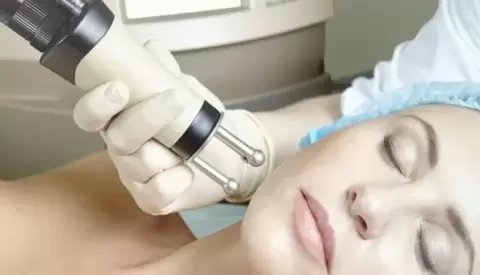
Today, various branches of medicine, in particular cosmetology, use various advanced techniques for rejuvenation, which in a very short time allow you to get a very good effect. In particular, these are laser techniques that can be used with and without damage to the surface layer of the skin. Non-ablative thermolysis will help restore youthfulness to the skin.
Fractional facial and body skin rejuvenation is a laser technology invented and patented in the United States in 2004 and received worldwide positive reviews to effectively eliminate and treat various manifestations of skin aging and more. Today, according to statistics, this is the most famous and sought-after laser procedure on the aesthetic medicine market.
After such rejuvenation procedures, tissue regeneration and restoration are carried out simultaneously at three levels: on the skin surface, in the middle and deep layers of the dermis tissues between the coagulation thermal channels.
Non-ablative photothermolysis - modern progress in cosmetology
This procedure is a safe and non-surgical method of skin rejuvenation, the action of which is aimed at stimulating and correcting the structure of skin cells without any harmful changes to the human body. Non-ablative photothermolysis today makes it possible to:
- Remove mimic wrinkles without a trace;
- Reduce pore expansion;
- Completely rejuvenates skin tone.
In addition, this technique is very effective in removing skin pigmentation, stretch marks and scars formed over time. Using this method, you can easily get rid of deeper and older scars.
To carry out this procedure, a special laser beam is used, which, during operation, is still divided into small microbeams. Thus, during the rejuvenation procedure, the depth and degree of impact of the apparatus are fully controlled without damaging the upper layer of the epidermis. In general, the effect of this beam can be compared with a peeling or special resurfacing procedure, but unlike them, it has a more effective skin rejuvenation effect. That is, when processing a skin area, some microburns remain on its surface, which are naturally rejected during further processing. Further, in the damaged areas, collagen begins to be rapidly produced, which contributes to the formation of new young healthy cells.
After a few such procedures have already been carried out, the result will be immediately noticed. The patient's skin becomes more even with a healthy color and luster. In a word, the non-ablative photothermolysis method is the best in today's skin rejuvenation, and at a very reasonable cost that everyone can afford.




























